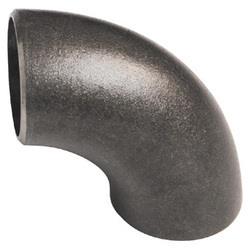ELBOW
An elbow is installed between two lengths of pipe (or tubing) to allow a change of direction, usually a 90° or 45° angle; 22.5° elbows are also available. The ends may be machined for butt welding, threaded (usually female), or socketed. When the ends differ in size, it is known as a reducing (or reducer) elbow. A 90º elbow, also known as a "90 bend", "90 ell" or "quarter bend", attaches readily to plastic, copper, cast iron, steel, and lead, and is attached to rubber with stainless-steel clamps. Other available materials include silicone, rubber compounds, galvanized steel, and nylon. It is primarily used to connect hoses to valves, water pumps and deck drains. A 45º elbow, also known as a "45 bend" or "45 ell", is commonly used in water-supply facilities, food, chemical and electronic industrial pipeline networks, air-conditioning pipelines, agriculture and garden production, and solar-energy facility piping. Elbows are also categorized by length. The radius of curvature of a long-radius (LR) elbow is 1.5 times the pipe diameter, but a short-radius (SR) elbow has a radius equal to the pipe diameter. Short elbows, widely available, are typically used in pressurized systems, and in physically tight locations. Long elbows are used in low-pressure gravity-fed systems and other applications where low turbulence and minimum deposition of entrained solids are of concern. They are available in acrylonitrile butadiene styrene (ABS plastic), polyvinyl chloride (PVC), chlorinated polyvinyl chloride (CPVC), and copper, and are used in DWV systems, sewage, and central vacuum systems


